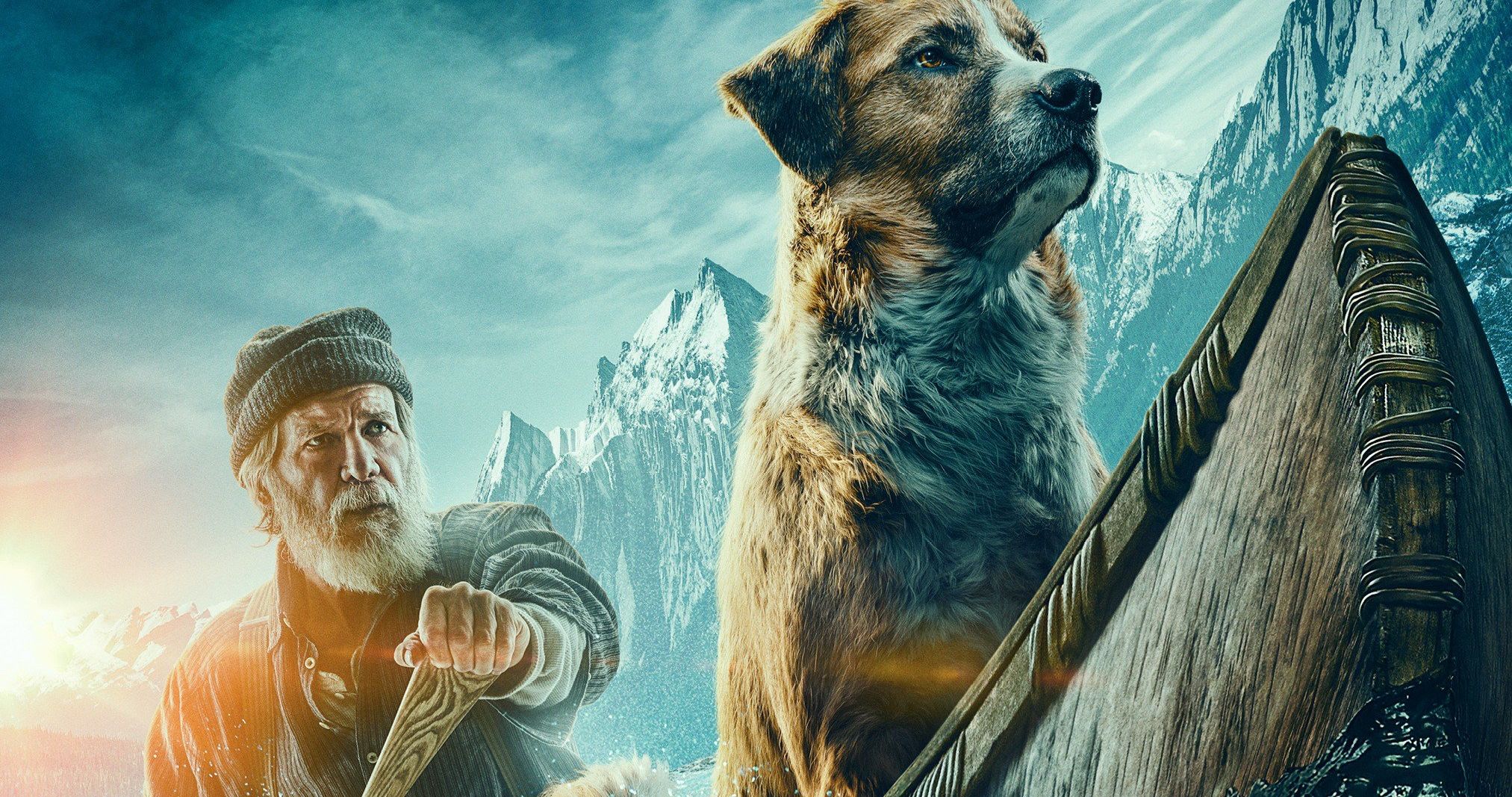Jack London's classic novel of a dog's journey to primal nature is spoiled by modern technology. The Call of the Wild mesmerized readers with its heroic canine protagonist and vivid descriptions of the Klondike Gold Rush. The latest film adaptation suffers from cartoonish CGI visual effects. Every critter and setting is lamentably fake. The result is an entirely unconvincing look that torpedoes every other aspect of the story. In a time when photorealistic animation captivates and immerses, The Call of the Wild comes up sadly short.
We first meet Buck as the rambunctious pet of a wealthy judge (Bradley Whitford) in 1890s Santa Clara, California. A gargantuan Saint Bernard and Scotch Collie mix, the lovable Buck creates chaos in the household. Buck's size and strength makes him a valuable target. Sled dogs are in high demand for those who dare to brave the frozen Canadian Yukon for gold. Buck is lured away on a stormy night by an unscrupulous thief. The spirited dog is cruelly beaten into submission on the trip north. His will is broken by "the law of the club."
Buck's intelligence, stamina, and loyalty are noticed quickly upon his arrival. He first meets the grieving John Thornton (Harrison Ford), then the intrepid French-Canadian mail runners Perrault (Omar Sy) and François (Cara Gee); who train him to become a sled dog. Buck learns the ways of the pack through the jaws of its alpha, the ferocious Spitz. As Buck becomes acclimated to life in the Yukon, he senses an ancestral spirit calling him from the woods. An inner awakening draws him further into the distant land, where an old friend documents his remarkable transformation.
The Call of the Wild's mix of live action and CGI is meant to engross you into the adventure. It achieves the exact opposite. There isn't a second of the film where Buck looks like a real dog. His facial features are anthropomorphized for human-like reactions. Granted, this is a family film meant to appeal to younger children. But the dog, the primary character, is not believable or realistic. When Harrison Ford hugs, or physically interacts with Buck in any way, he also becomes CGI. It's blatantly obvious, especially in the brightly lit settings.
The Yukon, cold weather, and pivotal action scenes are also marred. Perrault and François escaping from an avalanche turns into a video game. The actors are clad in winter gear, but never exhibit any signs of freezing. They're clearly on sets, in front of a green screen, with motion capture performers mimicking the animals. The Call of the Wild fails to suspend disbelief. This is a critical flaw that's never overcome.
The film is far more politically correct and family friendly than the source material. The violence is toned down quite a bit. The battles between Buck and Spitz aren't as deadly. The characters are also racially diverse. Omar Sy and Cara Gee, who play Perrault and François, are an interracial couple in this modern take. The multi-cultural cast is representative of the global audience. Jack London, who was a virulent and notorious racist, would find the film unrecognizable.
The dramatic moments were lost on me. I honestly couldn't get past the paucity of realism. Younger children, and to be frank, older viewers with a less discerning eye for CGI use will be less critical. The Call of the Wild does not capture the elements that made the novel definitive American literature. The Call of the Wild is a production of 3 Arts Entertainment and 20th Century Fox Animation with distribution by the newly minted 20th Century Studios.

